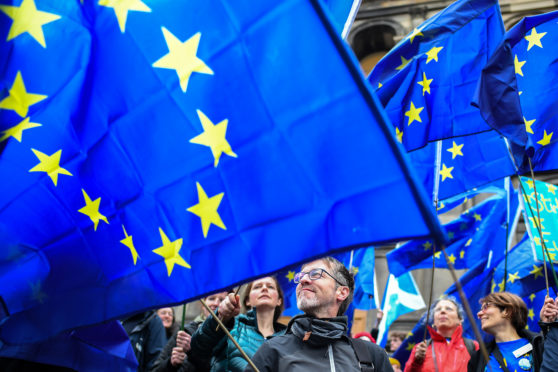What about us?
Brexit has yet to happen, but so far Scotland’s economy is doing OK. High employment, slow growth, but fractionally better than the rest of the UK, house prices on the up – by the very low bar we set, things are pretty good.
Politically, it has left us in a one-party state. Brexit has shone a harsh light on Scottish Labour, leaving it burned by the glare. No unity, a weak leader in Richard Leonard and catastrophic loss of members. Leonard, at the recent party conference, announced free bus travel for all – a bizarre response to the crisis facing our country.
Ruth Davidson is on the right side of the argument – she voted Remain – but in the wrong party. She and Tory colleagues in Scotland must be looking at the next general election with fear. What is the party line, are they chasing Leaver votes, why oh why didn’t they establish total independence from the English party?
The result is that the SNP, despite having hokey-cokeyed on independence and its incompetence in government, is sitting pretty. As a consequence, our national debate follows a simple formula: UK doing bad equals case for independence.
That logic works rhetorically, but not in fact. In the real world, posh boys lying over Brexit does not mean everything said about indy is true. Nor does UK Government disaster mean Scottish Government success. And the simple rubric “Brexit bad, indy good” is facile.
The SNP’s line about an innocent hero escaping the dark forest of the UK chased out by a Brexit bear has an obvious attraction, but politics isn’t a bedtime story. Thus the real question facing Scotland is can the SNP be trusted to win Indyref2 and get us back into Europe?
Nicola Sturgeon promised the brutal truth about indy not long after becoming party leader. This resulted in the SNP’s Growth Commission report of last year that rejected the economic case Sturgeon and Alex Salmond had made in 2014. Good to get the truth out there – but there is no consensus on how we respond to the economic shock of indy.
Nor does the SNP have a currency plan – sticking with Sterling is to be challenged at the party’s spring conference, and has many intelligent critics within the ranks. They argue for a brand new currency – at a huge cost.
Arguably, the SNP leadership has played up Brexit as a way of drawing attention from these issues. The argument is that the crisis is so bad (leaving the EU) this creates an imperative to become independent and rejoin to the EU. However, the SNP’s EU policy is also tatty.
Party policy is to withdraw from the Common Agricultural Policy, withdraw from the Common Fisheries Policy and refuse to join the Euro. The first two were inventions designed to keep the voters of the north-east sweet on Salmond. As Brexit shows, setting terms to Brussels and expecting it to willingly agree is foolish.
If you are voting for independence because you then want to rejoin the EU, then you do not want existing SNP policy – it will lead to disappointment and crisis. This is particularly so when it comes to the Euro.
The SNP has long argued that because some member states such as Sweden and Denmark are not in the Euro, then Scotland could also opt out. This has been repeated so often it has a ring of truth, but not in Brussels.
The EU is quite clear that states joining since the birth of the Euro must join the currency. Sweden and Denmark were EU members before the single currency came into existence.
All members post-2000 are subject to economic discipline designed to get them Euro-ready. These are:
l Government deficit must not exceed 3% of GDP.
l Gross government debt must not exceed 60% of GDP.
l The member state must have achieved exchange-rate stability for at least two years
l The nominal long-term interest rates of applicant nations must not have exceeded by more than 2% the average of the interest rates in the three member states with the best records on price stability.
The effect of this would be to restrict the spending power of a new Scottish Government. This is not necessarily a problem – but the nation needs to know times will be tough under these rules. At the moment, the SNP is writing promises on a bus, and we know where that gets you.
The solution is easy – be honest on all these points. Scotland would have to prepare to join the Euro, after a period of time staying with Sterling. The effect of this, coupled to the jolt to public spending, would be tough. However, if Scotland’s only hope is to be independent in Europe, then it is a price worth paying.
The real Brexit effect is that people cannot stand lies. The way to win Indyref2 and get back into Europe is to be blunt, honest and pragmatic – and for Scotland, that starts with learning to tell the truth. After all, what’s so wrong with the Euro?










